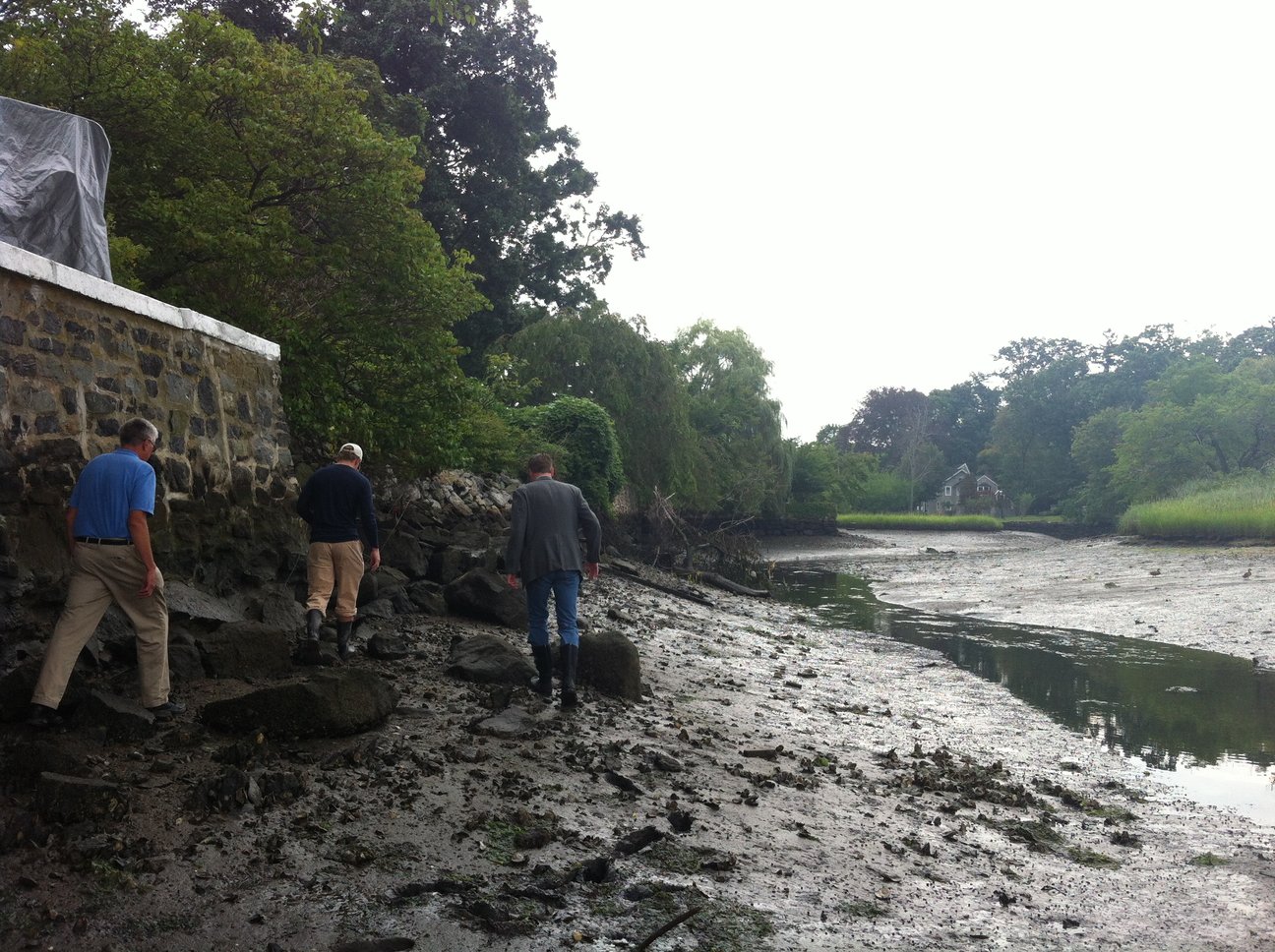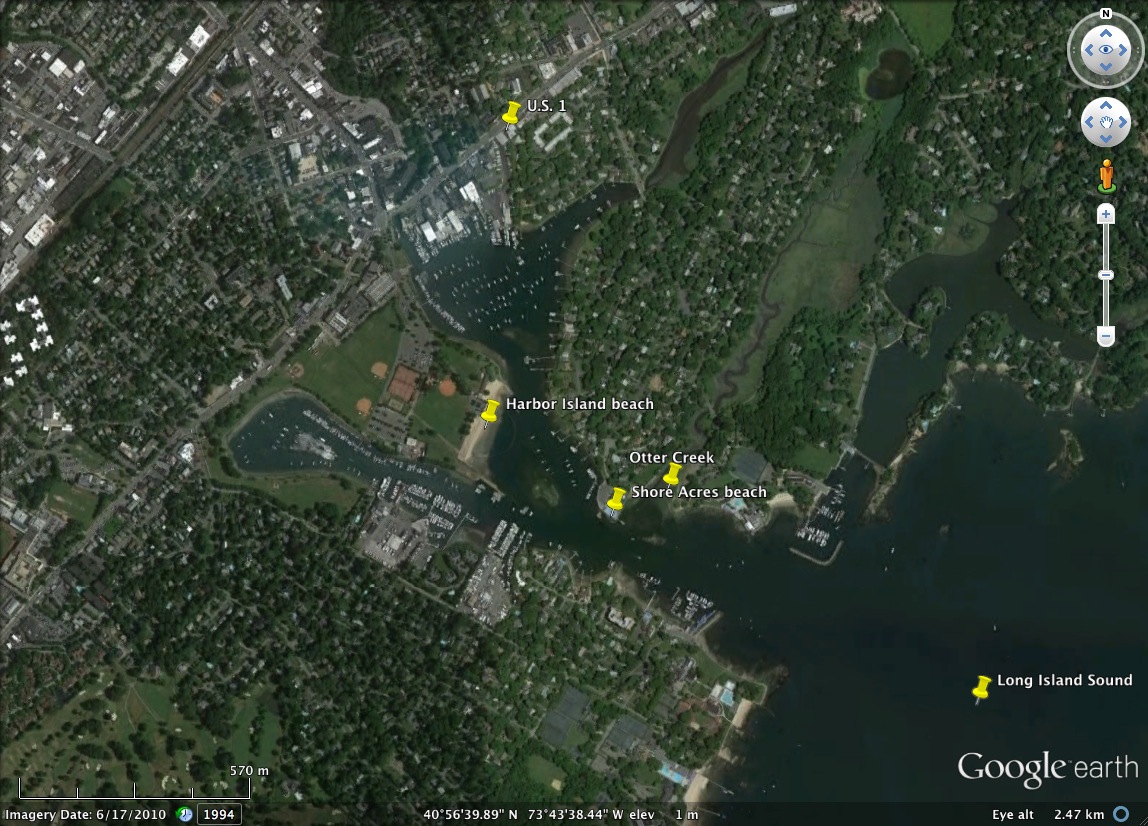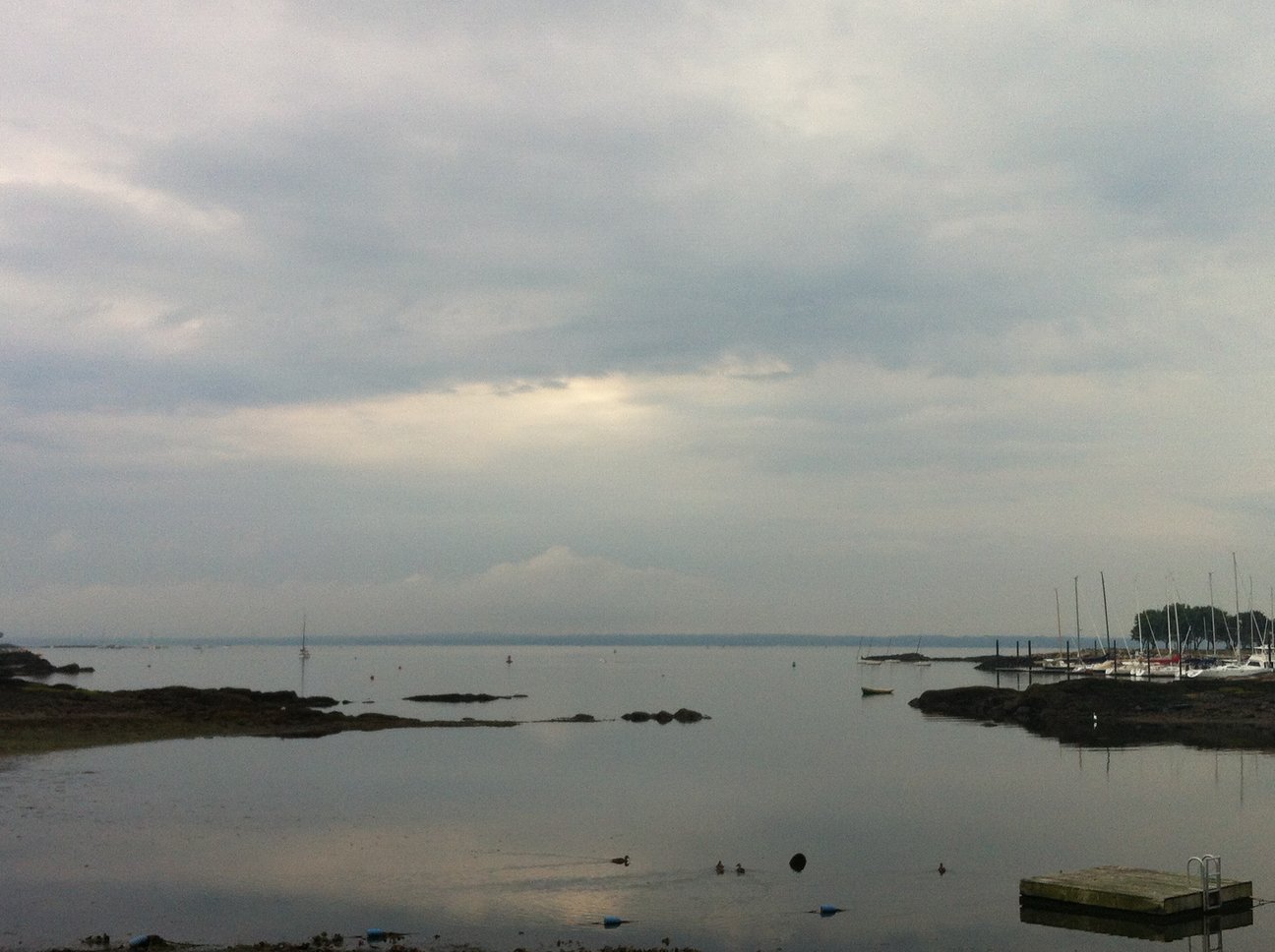
Save the Sound, along with a team of committed volunteers, initiated a pilot water quality monitoring program in Mamaroneck this summer. Our goal? To uncover why beaches are closed so often. What we found was shocking, but not unexpected.
Our first discovery was a slurry of goop from a local A&P supermarket running into a storm drain on the Mamaroneck River. The second big find was a significant sewer line break near Mamaroneck Harbor, in a line belonging to the Mamaroneck Beach & Yacht Club.
As soon as we told Village of Mamaroneck officials of the problems, they acted, notifying the supermarket and requiring the yacht club to fix the break.
This project’s swift success in stopping pollution from reaching the Harbor is a perfect example of how even small partnerships of committed residents, officials and activists can make a big difference in the health of Long Island Sound.
Why Mamaroneck?
Mamaroneck is of particular concern because it’s home to half the beaches that the Westchester County Health Department closes preemptively whenever it rains a half-inch or more within 24 hours (read more here).
The rain carries bacteria from leaky sewers and streets and fields into the waterways that lead to the beach areas. This summer, data from the Health Department seem to indicate that water quality at the beaches is improving.
On days it rained in 2012, total pathogen counts of the disease-causing bacterium enterococci near Harbor Island beach averaged 746 colony-forming units per 100 milliliters (CFU/100ml), with a high of 3,500 and a low of 64. On days it rained in 2013, total enterococci counts at the same location averaged 198 CFU/100ml, with a high of 700 and a low of 50.
The improvement is cause for optimism, although since the New York State standard is 104 CFU/100 ml, it’s obvious that more needs to be done.
With the encouragement of Mamaroneck Village officials and the support of Dick Harris of Earthplace/Harbor Watch in Westport, we assembled a team of volunteers to take water quality samples. Many of the volunteers were associated with the village’s Committee for the Environment and the Marine Education Center.
What Did Save the Sound’s Water Quality Program Uncover?
When the Natural Resources Defense Council released its annual “Testing the Waters” beach closing report in June, it noted that the Shore Acres beach had been shut down because of bacterial pollution more often last year than any other beach in the state. So we knew that would be a key area to test.
What we saw was appalling and disgusting: raw sewage bubbling out of an eroded area of the stream bank just up Otter Creek from the Shore Acres beach and Mamaroneck Harbor. When the testing results came in, they were just as appalling.
Two samples resulted in fecal coliform counts of 700,000 and 550,000 CFU/100ml, and E. coli counts of 480,000 and 340,000 CFU/ml. The New York state health standard for freshwater is 235 E. coli CFU/100ml, so the numbers we found are off the charts and indicate raw sewage and dangerously unsafe water.

We took Village officials to the site. Within hours they identified the owners of the sewer line as the Mamaroneck Beach & Yacht Club, brought the situation to their attention, and oversaw a quick temporary repair, with plans for a permanent repair in the works.
Elsewhere, our staff and volunteers found a garbage dumpster in an A&P grocery store parking lot that was leaking grease and other material contaminated with fecal coliforms into a storm drain, which flowed into the Mamaroneck River. The village Building Department is now working with A&P on a permanent solution.
What Other Pollution-Stopping Activities Are Happening?
While Save the Sound conducted its testing, a village consultant was taking its own water quality sam
ples from storm drains along the Mamaroneck and Sheldrake Rivers. The consultant, the Arcadis environmental and engineering firm, discovered a single-family house that unbeknownst to the homeowner was not connected to the sanitary sewer system: all of its household sewage was going directly into the storm drains and the Mamaroneck River. The owner has now fixed the problem by properly connecting the house to the sewer system.
At another location, Arcadis found an illicit discharge that was sending sewage into an abandoned sewer line. The discharge was halted and the abandoned sewer plugged with concrete.

Finally, Mamaroneck has long had a problem with geese that gather on the fields and lawns at Columbus Park in the center of the village, at the confluence of the Sheldrake and Mamaroneck Rivers, and Harbor Island Park, which abuts the public beach on Mamaroneck Harbor.
To rid the fields of goose droppings, village workers have been vacuuming twice a week. That prevents much of the goose droppings and the bacteria they contain from reaching the waters and the beaches along the harbor.
What Next?
This summer’s program confirmed two important lessons: 1) small, dedicated groups of people can indeed make huge environmental improvements and 2) these raw sewage leaks and stormwater drain discharges are just the tip of the iceberg. Our samples suggest there are more upstream pollution sources that we need to investigate next season.
Westchester residents deserve clean, healthy waters to swim in. Save the Sound will be working this off-season to build public and political support for the funding that municipalities need to make infrastructure improvements. Pending sufficient funding for our Western Long Island Sound work, we plan to resume water quality testing next summer to help make sure all beaches are open for all residents, all the time.
To learn what you can do to help stop stormwater pollution, visit us at reducerunoff.org. And to learn when Westchester County’s beaches are opened or closed, sign up for our Sound Swim Alerts. Like the water quality monitoring program, those alerts will be back next summer as part of Save the Sound’s quest to open Long Island Sound’s beaches.
Posted by Tom Andersen, New York programs and communications coordinator, and Laura McMillan, director of communications, for Save the Sound

Hi, Very interested in the Long Island Sound area. I am engaged with a defense contractor who is utilizing Dissolved Organic Carbon and other constituents via false color imagery that can identify waste water leaks from satellite images. This should be of interest for your members, who obviously spent much time searching for sources of pollution. I was doing the same thing till we found that there is a satellite based methodology that can do the same thing from space. Take a look, I’d love to work with you guys to solve coastal pollution issues for Long Island Sound. It’s all one ocean. – BBS
This was absolutely great to read! Thanks for all the hard work and for bring the truth about the problems our Village is facing out in the open. The Rev. Marvin E Henk
This is great work, absolutely excellent. Good job guys. A lot of detective work but having a significant outcome on water quality.
I second Brian’s comment (above). You are the best!